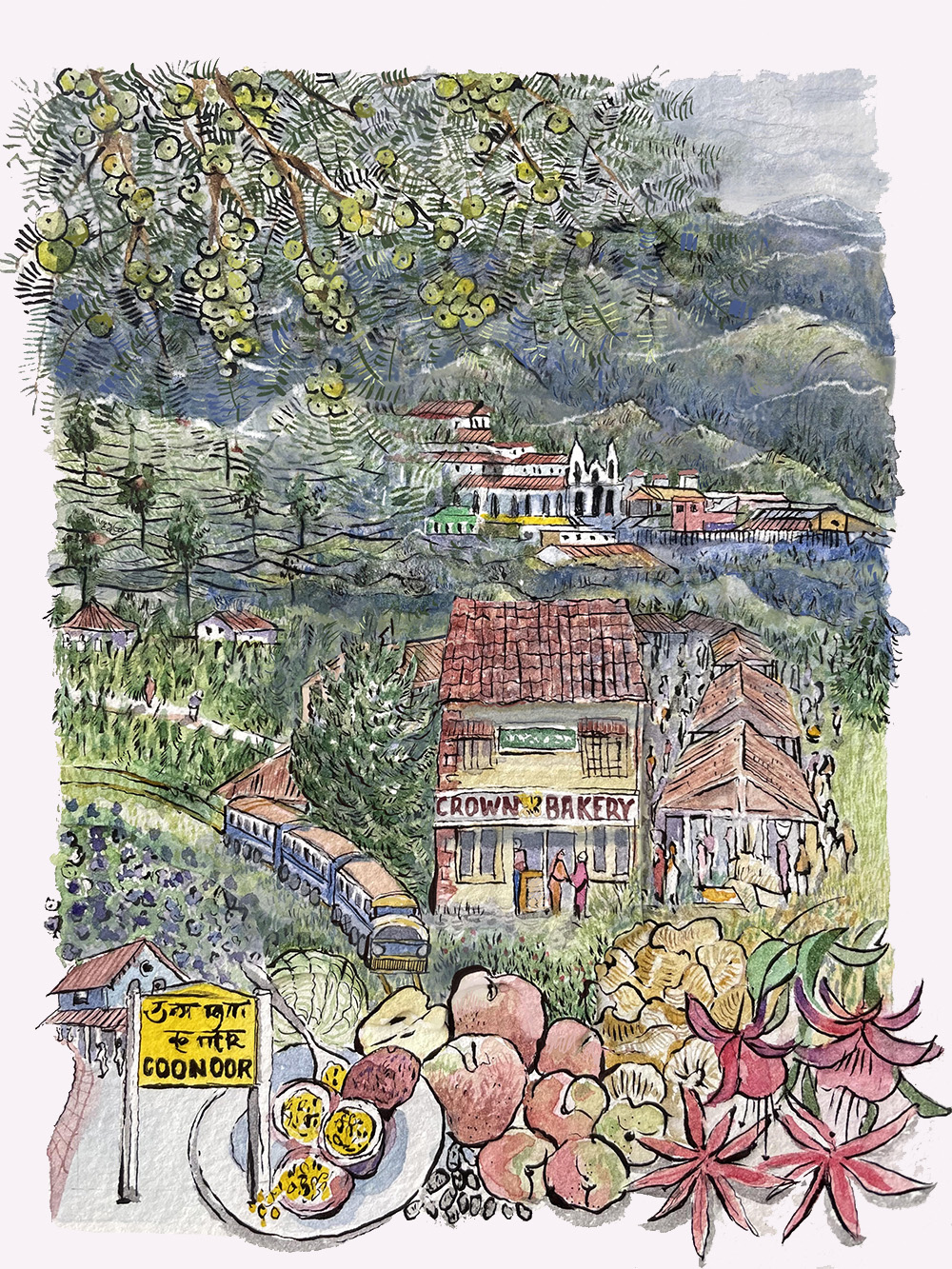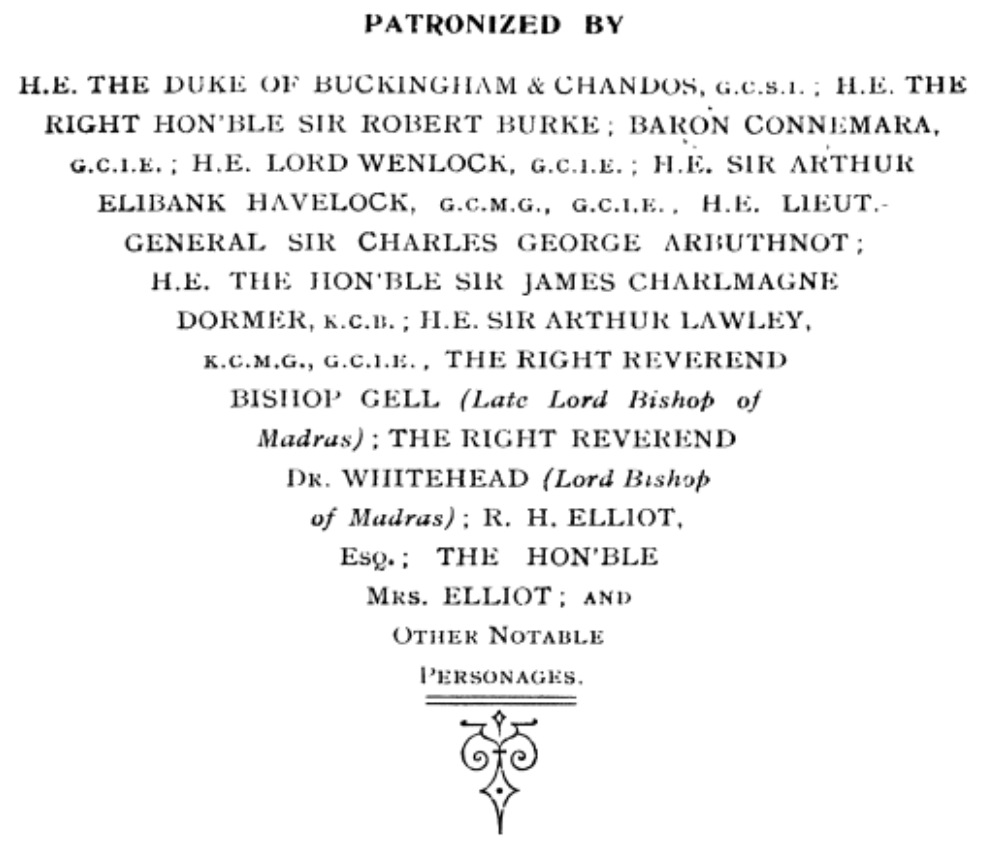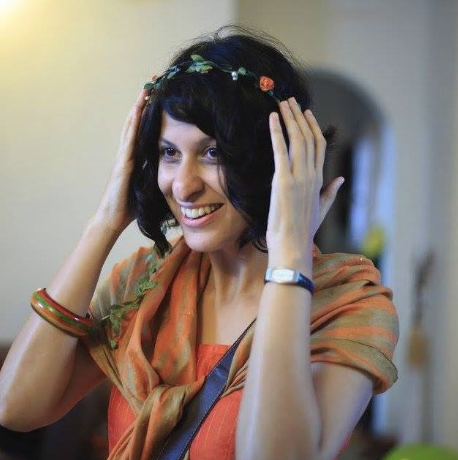The Blue
Remembered Hills
“Coonoor is 6000 feet above sea level, with a population of 5,000 of whom 2,000 are Europeans…There are about twenty miles of excellent and beautiful pleasure drives, the hedges of which are bright with roses, fuchsias, dahlias, heliotropes, lantanas, sunflowers, passion flowers and many others.
It is a lovely spot, every turn of the roads opening some fresh view of noble mountains, steep precipices, sweeps of forest, and the rich fertile plains beyond.”
Picturesque India: A Handbook for European Travellers

For the colonial British, the delicate crispness of Coonoor’s air is the perfect escape from the strangling heat of the Madras summer. Their tiny settler community (only 36 European houses in 1863, according to the Bombay Gazette) swells and distends until it sweeps away the homes of Coonoor’s Indian dwellers, planting smug British cottages in their stead. Fuchsia, heliotrope, geranium, mimosa and roses are forced onto the local vegetation. By 1843, radish, cabbage, savoys, kale, asparagus, new potatoes, carrots, cauliflower, beetroot, lettuce, turnips, plums, raspberries, strawberries, blackberries, gooseberries, plums, peaches, limes and oranges honeycomb the town greens. The British take to calling it a ‘hill station’, a somewhat slighting reference to the stately Nilgiri ranges.
Lush indigenous forests are soon dimmed into coffee and tea plantations. “Tea is hideous,” grumbles the intrepid traveller – writer Maud Power in her 1907 book Wayside India, “The side of the mountain on which it grows is shaved bare of vegetation, while the ugly little pruned green bushes stand in rows like cabbages.” Notwithstanding its lack of visual appeal, estates like Glendale would do much to brick up India’s tea culture.
The cost of this? Crippling. Even in the 1870s, astringent reports of tea workers housed in squalid huts, swamped with water during the rains, circulate in the Indian newspapers. The workers have no medical facilities and ‘are allowed to die away like rotten sheep for want of prompt and proper medical treatment.’ (By 1881 though, a ‘roving correspondent’ writes in The Times of India, that proper housing and missionary hospitals have been set up, a “few years having effected a wonderful change in all these aspects.”)
For the Europeans, on the other hand, Coonoor is a sanatorium, its climes emollient enough for the sickly. They while away sun-flecked summers in its various hotels: Glenview (home to a rabble of Protestants thanks to its proximity to an old Protestant church), Hillgrove (near a Catholic chapel, and therefore drawing Catholic guests), Davidson’s, and Gray’s, amongst the first hotels of Coonoor, equal to any good lodging house in London. Gray’s advertises itself often, claiming an exquisite fruit orchard ‘the Garden of India’ in which loquats, apricots, grapes, apples, plums and pears are grown to the ‘utmost perfection’. Hillgrove, having no such natural advantages, yet draws a beam of royalty and other high fliers – the canker of class on full display.

(Advertisement from the Nilgiri Guide)
In this way, Coonoor
becomes a sleepy simulacrum
of an English town.
Life for the average European resident proceeds at an even keel.
By all accounts, Coonoor is unfashionable, affordable, peaceful. ‘In Ooty one has to dress well, but Coonoor and Kotagiri, being quiet, do not call for so much expenditure in that line.’
Perhaps so, but the food is excellent.
Maud Power writes that she was “fed on food the like of which I had not seen before – meat with a shade of fat here and there, and which had been allowed to hang a day, potatoes boiled, and possessing really a faint flavour, besides other vegetables and chickens fully grown.” This is washed down with Nilgiri beer (which tastes like Bass’ ale), brews from The Arbenghat in Ooty1, and wine and spirits that trundle up from Madras (now Chennai).
Breakfast tables are massed with grenadilla (the fruit of the passion flower creeper) ‘like little bombs with pulp inside them – you cut the top off and eat the contents with a spoon’, apples and peaches of excellent flavour, vividly-stained strawberries, and hill guava (to be pressed into jams and jellies).
There are also wild fruits such as “the Hill Gooseberry, which is a pretty little fruit of a peculiar and very agreeable flavour, and very wholesome; the varieties of Blackberry, which are not very good, except for preserve and tarts, and a small yellow fruit about the size and appearance of an English
Bullace, and of a sub acid pleasant taste; all of these fruits are very abundant… Mushrooms are plentiful in the rainy season.”2 The mushrooms, gathered by Toda women, are fried. Alongside, there is sometimes haricot mutton, sometimes a swarthy Irish stew, the mutton cooked until it is soft, luscious, unresisting enough to fall off the bone at the slightest nudge and dissolve into the gravy. It is all wonderfully warming in the sprightly Coonoor air.
Every Tuesday, a chattering thicket of residents congregate at the shandy, a bubbling clot of shops selling all manner of provisions brought from the ‘low country’ rather cheaply – unsurprisingly, everyone from the American and German missionary to the ‘noble looking’ Todas, Badagas and Kutchi Saits patronize them3. For every other day, there is the Coonoor Emporium, where visitors make their daily purchases without the need to descend into the town. J E Donnison supplies chocolates, sweets, petit fours, birthday, Christening and wedding cakes. Later comes Crown Bakery, set up by Mohammed Shariff, a pioneering member of the Hyderabadi community.
Nearby Ooty has its own recourse for the desperate Coonoorian – Blue Mountain Bakery, for one, purveyors of bridal, birthday and Christening cakes (also Madeira, sultana, seed and currant), petit fours, fondants, crystallized fruit and fancies such as Pascall’s famous sweets in silver top bottles and Tom Smith’s Toys and Crackers.
Even before the 20th C came knocking, establishments such as the East India Chocolate and Cocoa Company were vending everything from Nilgiri chocolates (!) to peppermint creams and vanilla essence. A prim report in the Report on the Administration of the Madras Presidency states that this was possibly “the first time that cocoa and chocolate have been grown in India”.
Bread comes for 2 annas a pound, pork and mutton for 3, beef for even less. Duck is plentiful. And there is hunting of course – wild fowl succumb frequently to the British gun.

(Advertisement in The Athenaeum & Daily News, 17 July 1880)
If the newspapers are to be believed,
there is no point visiting Coonoor – at most times of the year, it sits flat and empty and utterly unremarkable.
But as February ripens into March, Coonoor judders to life. The leading lights of the Madras Presidency ascend to the Nilgiris. Suddenly, a blaze of concerts, picnics, garden parties, balls, cotillons, lawn tennis tournaments, gymkhanas, even church concerts illuminate the town. By the middle of March, all the hotels are choc a block. Even nearby Wellington, somnolent through the year, is lit with excitement for its Sky races – horse racing held in May. Balls and dances are held at the Coonoor Club, the Railway Institute, the Bijou Theatre at Glenview hotel, at private residences, even the Vizianagram Raja’s mansion on one occasion – all glinting and glittering with light, festooned with flags and draperies, and aromatic with freshly-picked flowers.
Every night, the dance floor is thick with impeccably attired ladies and gentlemen, sipping their drinks and dipping into snacks brought around by dapper wait staff. Friends and relatives stop by, to gossip, to drink wine and whisky, and show off their gowns. The band plays on. As dusk settles into dawn, the party grows more and more lively. Not all the dancers are up to form however. ‘A young lady wants to be thoroughly sound and fit to stand being hustled at top speed for nearly eight hours over a ‘toffee’ floor by a series of youths whose idea of dancing consists in jumping frantically round the room from one foot on to the other,’ according to a frowning report in The Pioneer in 1899. Yet, the youngsters are incorrigible. None the worse for wear, they take up their tennis racquets the very next afternoon for yet another sporting tournament.
The much-vaunted ‘high moral’ note of Coonoor society is struck by its very own Gospel Temperance Society, which makes periodic attempts to wean licentious soldiers away from liquor with tea, cakes, fruit and didactic lectures at biannual meetings.
Time unfurls in this way until it is August. The sun-choked air gives way to gusting monsoon winds eddying round rain-varnished streets. The crowds scurry away, the festivities quiet. Soon, Coonoor is curtained by heavy rain that scatters the roses and decapitates the dahlias. Coughs, colds and catarrhs snake their way through a grumpy community.
But all is not lost. Come Christmastide, and Coonoor springs to (gentle) life again. This is the wedding season, with gossipy newspaper columnists inking reams about Miss Beatrice Edith Rowlandon in a foam of white satin and orange blossoms, and Miss Rose and Miss Nellie Groves in cream dresses and black hats adorned with roses. Christmas, weddings and a desultory dance or two later though, Coonoor lapses back into a sleepy hollow.
1 Sold in bottles or 4 gallon casks, at least in 1892.
2 J D V Packman, *Companion to the Blue Mountains, being a short description of the Neilgherry Hills, Medical, General and Domestic, with Remark upon Diet, Clothing, Sporting, and Other Matters, 1850
3 Through the Wynaad in The Times Of India, 27 June 1881
4 (Writers’ note: these libertine soldiers were a real worry at least in cities like Mumbai! Lots of run-ins with Indian Mumbaikars, the law, they would trash inns and eateries, assault women and shopkeepers etc, even the police wouldn’t be able to control them. OTOH, they were fairly poor, badly fed, underpaid and had access only to cheap liquor)


